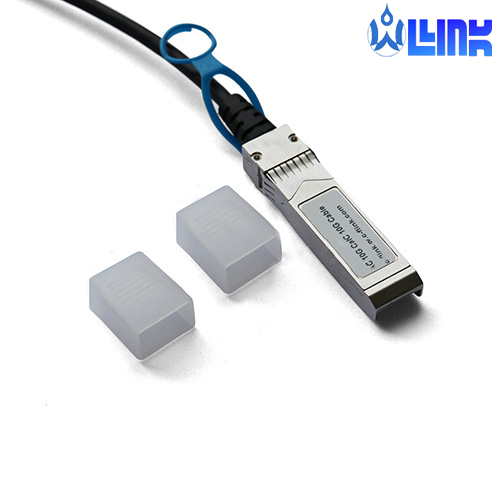Application of optical module
2021-08-04 11:42 admin
The downstream of the optical module is mainly used in three scenarios: telecommunication bearer network, access network, data center and Ethernet. Both telecom bearer networks and access networks belong to the telecom operator market. Among them, WDM optical modules are mainly used for medium and long-distance telecom bearer networks. Optical interconnect is mainly used for long-distance and large-capacity transmission of backbone and core networks. The access network market is the "last mile" from operators to users, including fiber-to-the-home passive optical networks (FTTH PON, PON optical modules' current maximum transmission rate is 10Gbs).
Application scenarios include wireless forwarding (5G optical module, the maximum transmission rate of 25Gbs).
The data center (above 40G) and Ethernet markets mainly include data center interconnection, data center interconnection (DCI), enterprise Ethernet and other scenarios.
The basic principle of the optical module-optical transceiver module
The optical transceiver module is the core optical communication device, which completes optical signals' optical-electrical/electric-optical conversion. It consists of two parts: the sending part and the receiving part. The receiving part realizes photoelectric conversion, and the transmitting part realizes photoelectric conversion.
Transmitting part: Input the electrical signal of a certain code rate. After being processed by the internal drive chip, drive the semiconductor laser (LD) or light-emitting diode (LED) to emit the modulated light signal of the corresponding code rate.
Receiving part:
· Input the optical signal of a certain code rate into the module.
· Convert it into an electrical signal by the photodetector diode.
· Output the electrical signal of the corresponding code rate after passing through the preamplifier.
Dense Wavelength Division Multiplexing Module
DWDM SFP is a dense wavelength division multiplexing technology that can couple light of different wavelengths into a single-core optical fiber and transmit them together. The channel spacing of DWDM SFP can differ by 0.4nm, 0.8nm, 1.6nm, etc. As required. The spacing is small, and additional wavelength control devices are required.
A key advantage of DWDM SFP is that the protocol has nothing to do with transmission speed.

SFP+ optical module
SFP+ optical module is a new generation of 10 Gigabit optical module, according to ANSI T11 protocol, which can meet the application of 8.5G Fibre Channel and 10 G Ethernet.
The appearance of SFP+ is the same as that of standard SFP optical modules. SFP+ retains the basic electro-optical and photoelectric conversion functions, reducing the Series, CDR, EDC, MAC and other signal control functions in the original XFP design, thereby simplifying the design of 10G optical modules reducing power consumption.
SFP+ has stricter shielding requirements than SFP, requiring a better shielding effect.
Xenpak optical module
The Xenpak optical module is connected to the circuit board through a 70-pin SFP connector, and the data channel serves as the XAUI interface. For all-optical interfaces defined by IEEE 802.3ae, Xenpak supports data conversion and can provide 4×3.125Gb/s, 10.3Gb/s, 9.95Gb/s at the line end.

Speak and X2 optical modules
Both Speak and X2 optical modules are developed from the Xenpak standard. Their internal functional modules are the same as Xenpak, and the application on the circuit board is also the same. They all use one module to realize the function of the 10G Ethernet optical interface. The Xenpak optical module needs to be slotted on the circuit board to be installed on the circuit board, which is complicated to implement and cannot be used in high density. The improved Xpak and X2 optical modules are only about half of Xenpak, directly placed on the circuit board, suitable for high-density rack systems and PCI network card applications.
Application scenarios include wireless forwarding (5G optical module, the maximum transmission rate of 25Gbs).
The data center (above 40G) and Ethernet markets mainly include data center interconnection, data center interconnection (DCI), enterprise Ethernet and other scenarios.
The basic principle of the optical module-optical transceiver module
The optical transceiver module is the core optical communication device, which completes optical signals' optical-electrical/electric-optical conversion. It consists of two parts: the sending part and the receiving part. The receiving part realizes photoelectric conversion, and the transmitting part realizes photoelectric conversion.
Transmitting part: Input the electrical signal of a certain code rate. After being processed by the internal drive chip, drive the semiconductor laser (LD) or light-emitting diode (LED) to emit the modulated light signal of the corresponding code rate.
Receiving part:
· Input the optical signal of a certain code rate into the module.
· Convert it into an electrical signal by the photodetector diode.
· Output the electrical signal of the corresponding code rate after passing through the preamplifier.
Dense Wavelength Division Multiplexing Module
DWDM SFP is a dense wavelength division multiplexing technology that can couple light of different wavelengths into a single-core optical fiber and transmit them together. The channel spacing of DWDM SFP can differ by 0.4nm, 0.8nm, 1.6nm, etc. As required. The spacing is small, and additional wavelength control devices are required.
A key advantage of DWDM SFP is that the protocol has nothing to do with transmission speed.

SFP+ optical module
SFP+ optical module is a new generation of 10 Gigabit optical module, according to ANSI T11 protocol, which can meet the application of 8.5G Fibre Channel and 10 G Ethernet.
The appearance of SFP+ is the same as that of standard SFP optical modules. SFP+ retains the basic electro-optical and photoelectric conversion functions, reducing the Series, CDR, EDC, MAC and other signal control functions in the original XFP design, thereby simplifying the design of 10G optical modules reducing power consumption.
SFP+ has stricter shielding requirements than SFP, requiring a better shielding effect.
Xenpak optical module
The Xenpak optical module is connected to the circuit board through a 70-pin SFP connector, and the data channel serves as the XAUI interface. For all-optical interfaces defined by IEEE 802.3ae, Xenpak supports data conversion and can provide 4×3.125Gb/s, 10.3Gb/s, 9.95Gb/s at the line end.

Speak and X2 optical modules
Both Speak and X2 optical modules are developed from the Xenpak standard. Their internal functional modules are the same as Xenpak, and the application on the circuit board is also the same. They all use one module to realize the function of the 10G Ethernet optical interface. The Xenpak optical module needs to be slotted on the circuit board to be installed on the circuit board, which is complicated to implement and cannot be used in high density. The improved Xpak and X2 optical modules are only about half of Xenpak, directly placed on the circuit board, suitable for high-density rack systems and PCI network card applications.